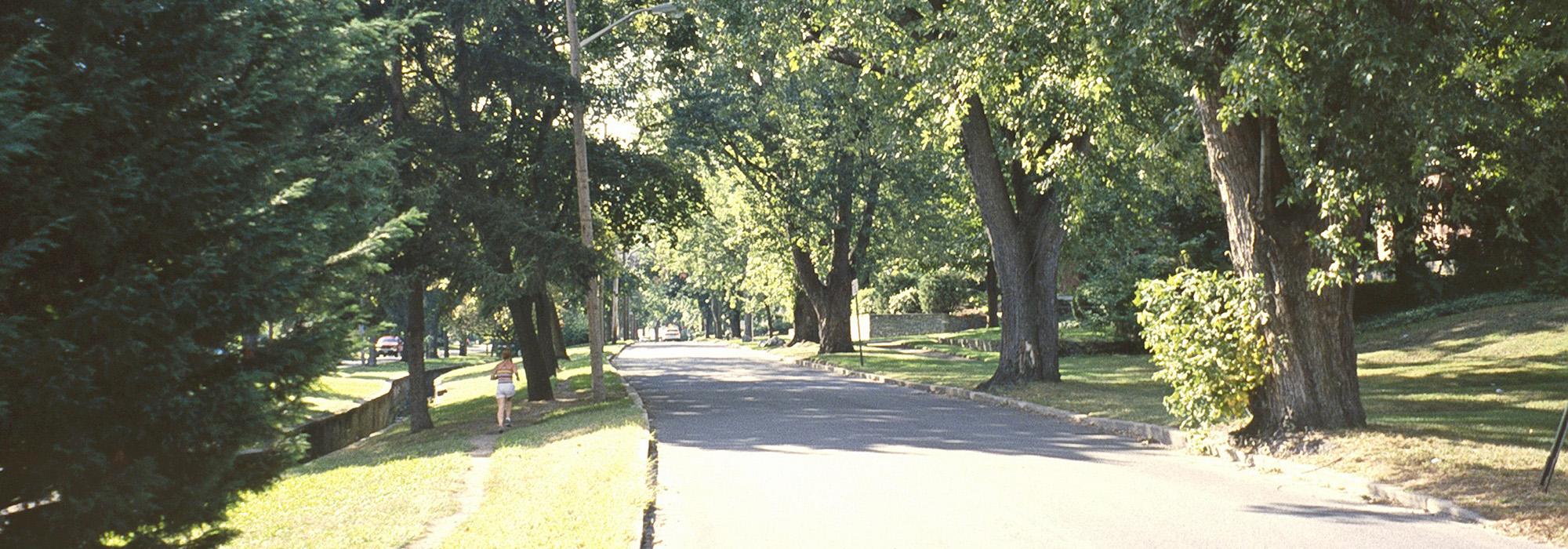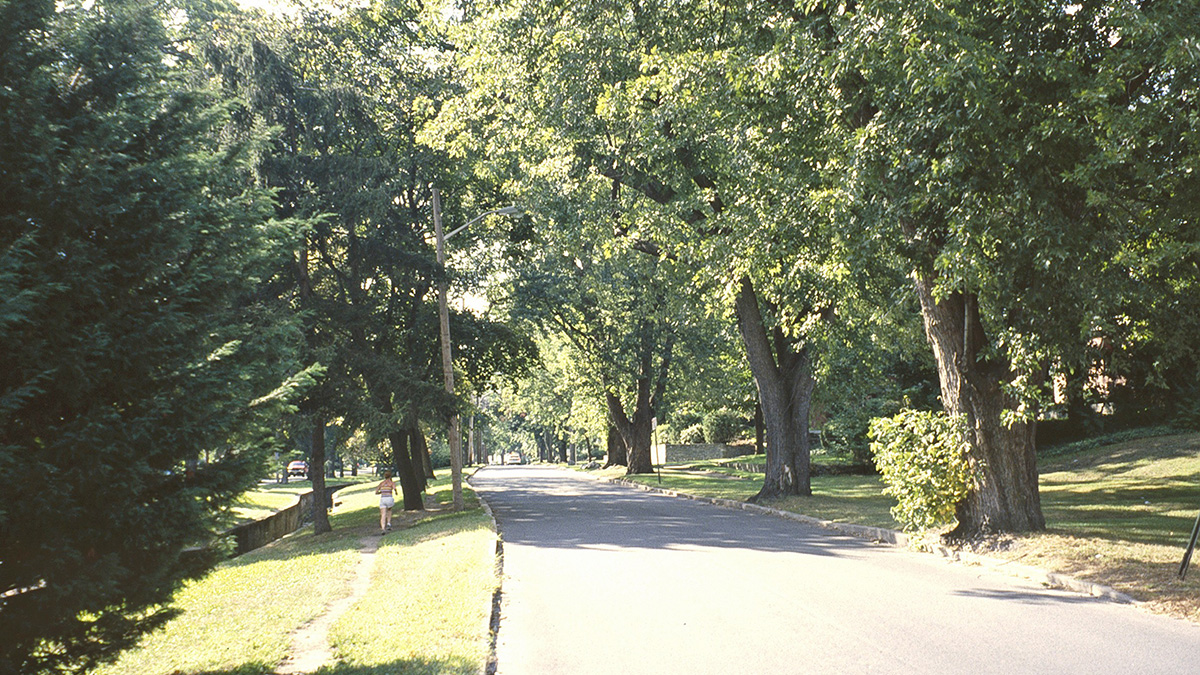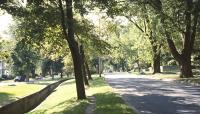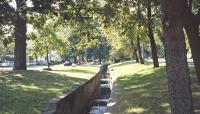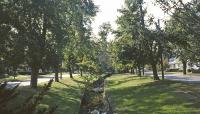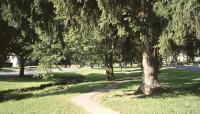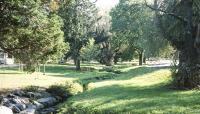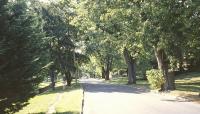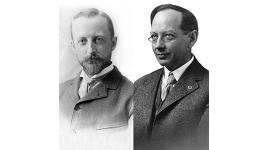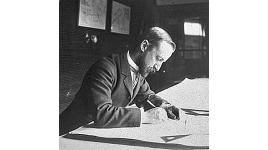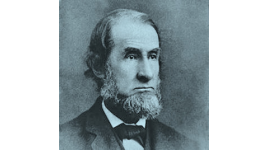Landscape Information
The state’s first designed parkway, this 200-foot-wide thoroughfare was commissioned by the Swan Point Cemetery in 1886 and designed by H.W.S. Cleveland to provide a more dignified arrival experience for the forty-year-old cemetery. Road construction commenced in 1892 and was completed two years later.
The boulevard was designed to run from Butler Avenue to East Avenue in Pawtucket and was composed of a grassy central median flanked by a pair of one-way roadways, tree-lined perimeter grass shoulders, and sidewalks. Planting of the boulevard’s central park and the medians did not take place until 1904. With Cleveland’s passing in 1900 the Olmsted Brothers firm was engaged to develop a planting plan that would be based on his original design for the length of the boulevard.
John Charles Olmsted, who had undertaken the field work with Carl Parker, proposed that the central parkland median and the perimeter shoulders be planted with deciduous trees with an understory of hardy perennials, in addition to broad mass plantings of flowering and evergreen shrubs. Although the planting design intent has diminished over time (understory plantings have been replaced by lawn and there is a diminished tree canopy), the boulevard has not been significantly altered.
In 1913 the Olmsted Brothers returned to Providence and prepared a plan for the western section of Swan Point Cemetery, which was largely realized. Blackstone Boulevard quickly became a highly desirable address. The Blackstone Boulevard-Cole Avenue-Grotto Avenue Historic District, including 380 contributing structures, was listed in the National Register of Historic Places in 2009. The preservation and stewardship of the boulevard is advanced by the Blackstone Parks Conservancy working in partnership with Providence Parks and the Department of Public Works.



